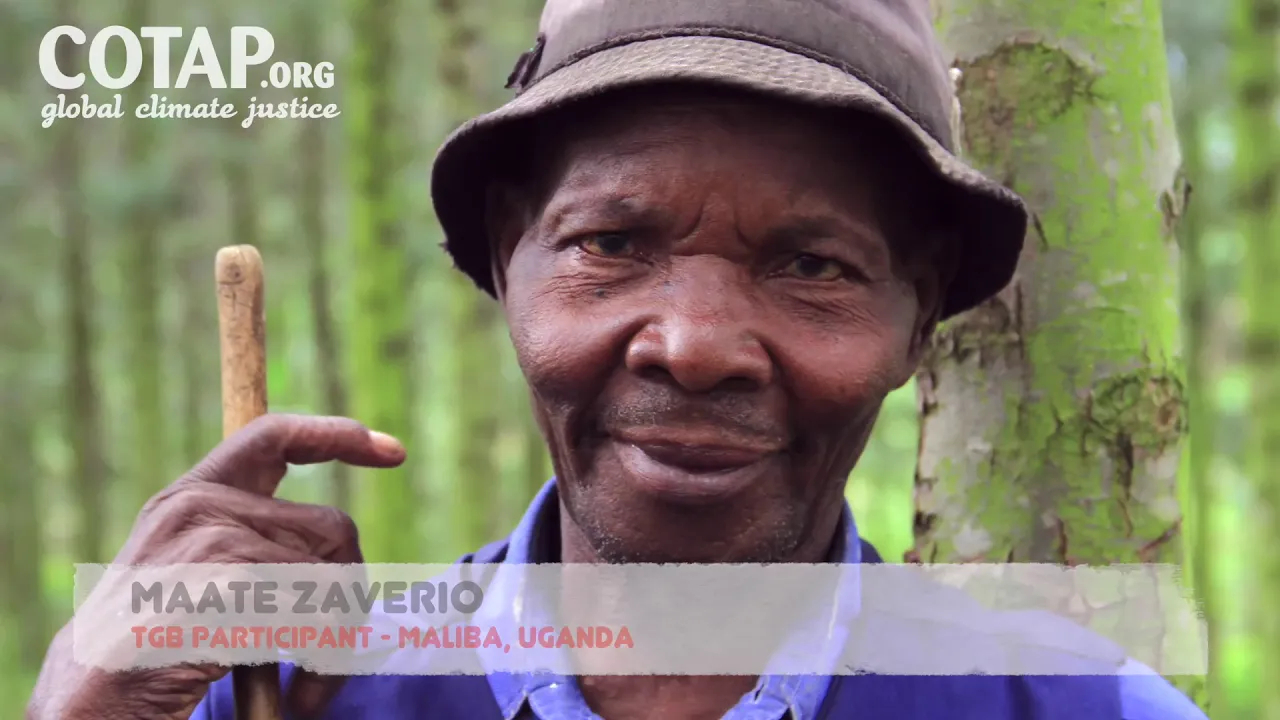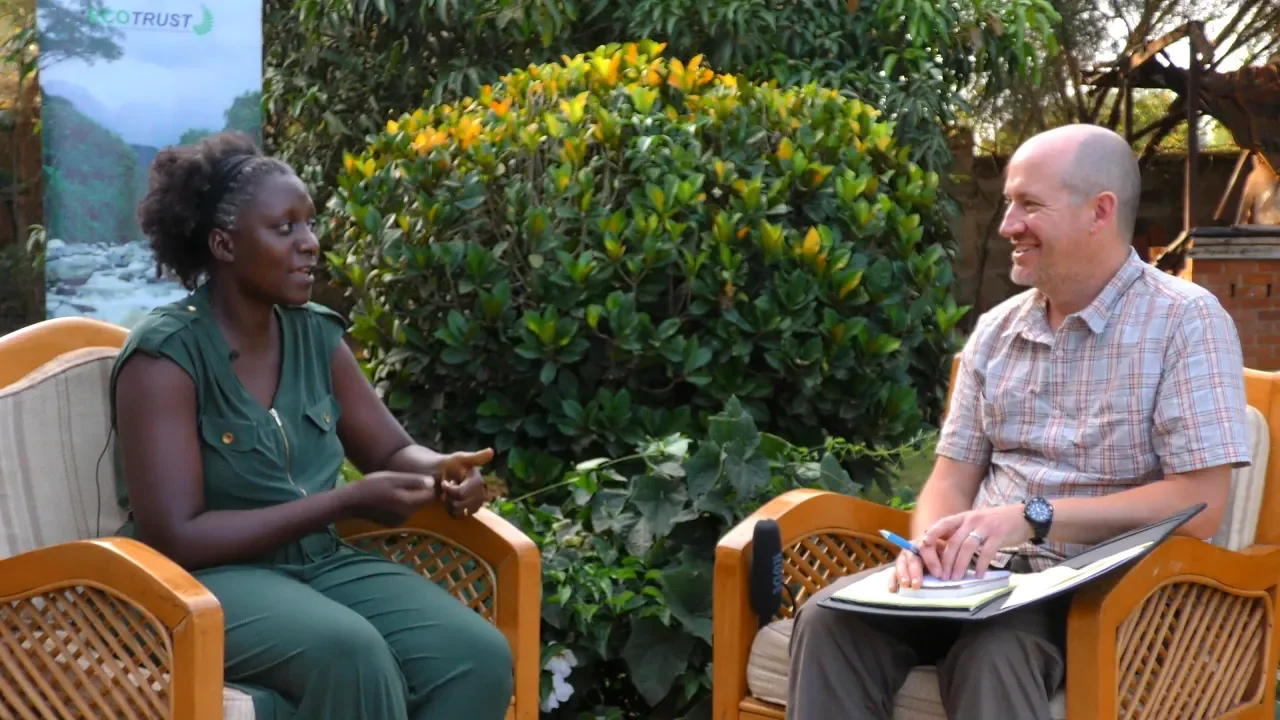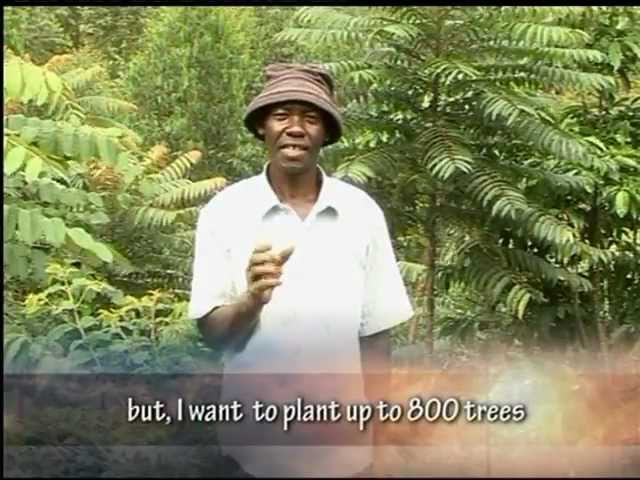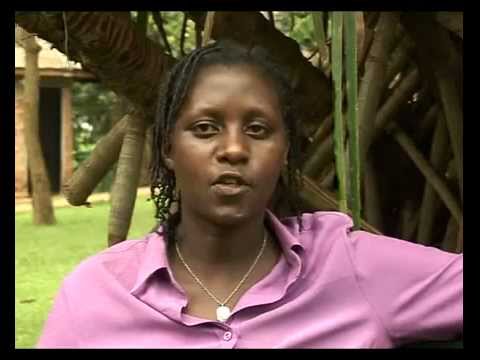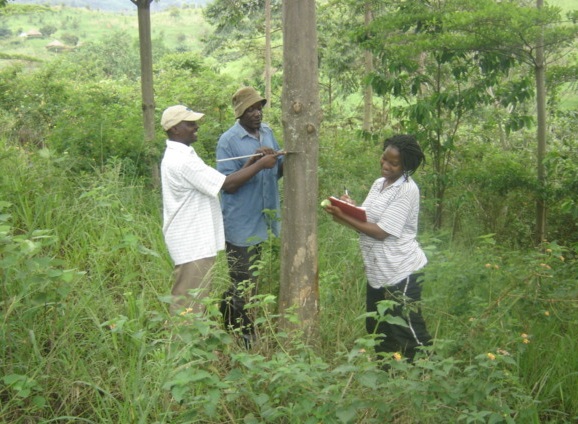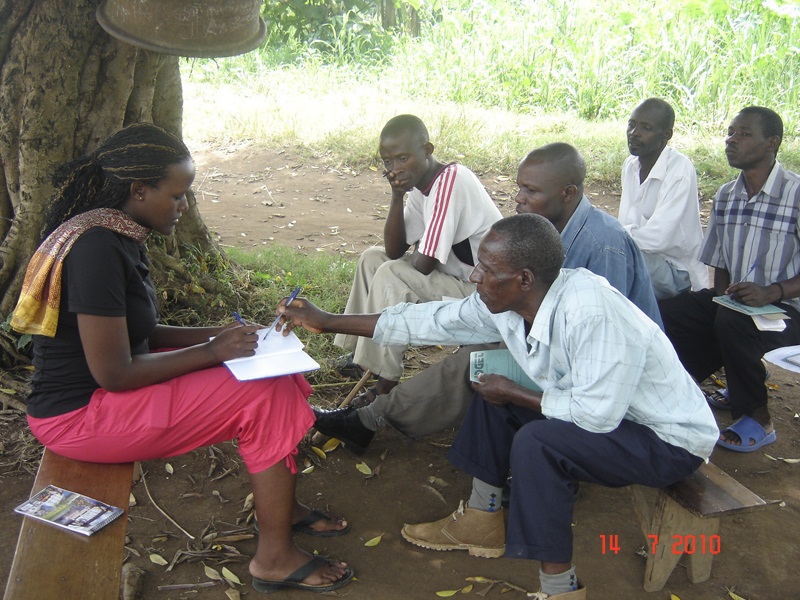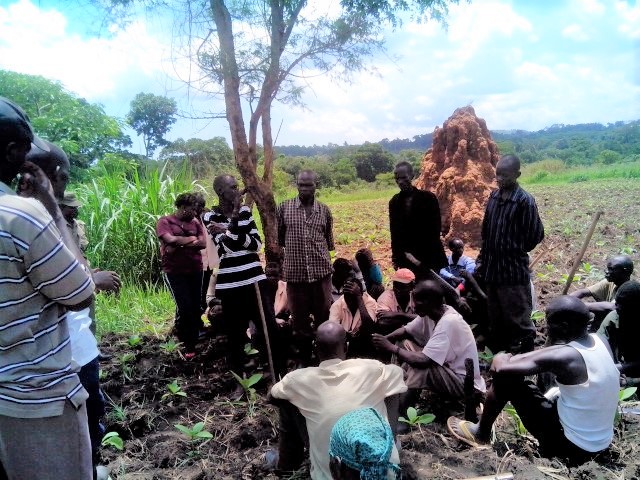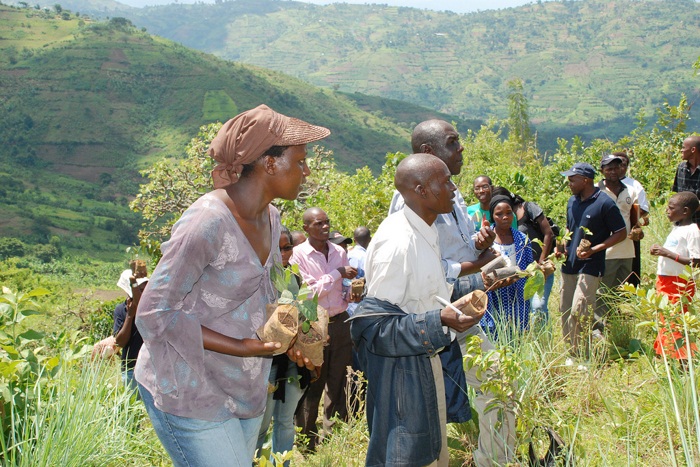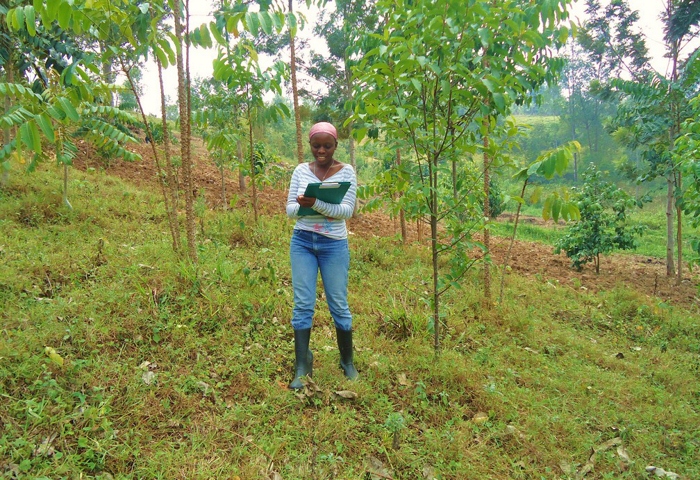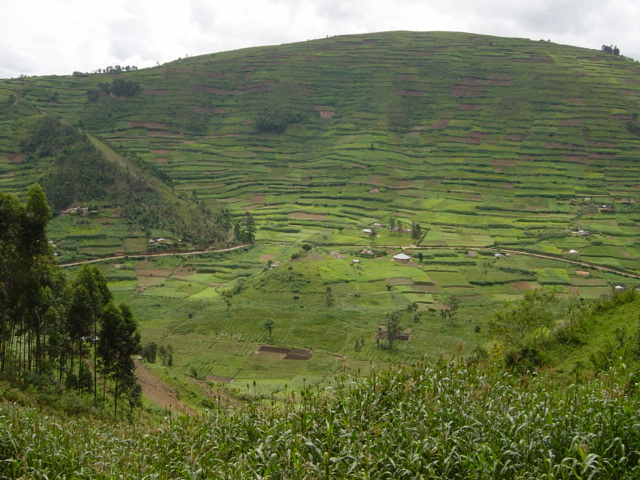Project updates and farmer profiles can be seen on COTAP’s blog and the project’s most recent annual report and COTAP’s transactions with it are in our Transparency section.
Interactive Map
To view individual farmer details, click on the menu icon at top left, select a region or “landscape,” and pick a farmer. A bigger version is here.
Overview
Ecotrust’s Trees for Global Benefits (TFGB) project, located in within the Albertine Rift valley in Uganda, is a small-scale, farmer-led agroforestry program which produces long-term, Plan Vivo-accredited emissions reductions while measurably improving farmer livelihoods and emphasizing sustainable land-use practices. Uganda, in sub-Saharan East Africa, is amongst the poorest countries in the world, ranked 163th of 187 countries in the UNDP’s 2014 Human Development Index. The TFGB project began as a pilot in the Bushenyi district in 2003, and the pilot’s success has led to expansion into the districts of Rubirizi, Mitooma, Kasese, Hoima, and Masindi, as well as into the Mount Elgon ecosystems of Rwenzori, Mbale, Manafwa, Bududa, Bulambuli, and Sironko.
Community and Socio-Economic Impacts
In 2016, a total of 749 smallholder households and community groups performed plantings which will sequester an estimated 84,149 tonnes of carbon dioxide. Distributions to TFGB project farmers during the 2016 calendar year were $330,504.77. A 2009 study on the socio-economic benefits of this project (downloadable in the “Additional Project Document(s)” section at right) surveyed 768 households from 168 villages in 3 districts. The study found that carbon payment contracts averaged USD $904 over 10 years for a woodlot on 1 hectare (2.47 acres), where most participants held title to between .5 and 2 hectares.
Multiple Benefits at Both Household and Community Levels
The first thing most participants do when they receive their carbon funds is to pay school fees. In addition, many have used their earnings to purchase household items such as mattresses, televisions, and cellphones.
In addition to farmers’ direct payments for planting trees and sequestering carbon, the project was also found to contribute to income stability, food security, and fuel security at the household level. Sometimes participants receive their carbon payments during times of shortfalls of their agricultural harvests. In such cases, project participants now have the option of purchasing food to compensate for shortfalls. This stimulates the local economy by creating income for food vendors who did not experience shortfalls.
It was also revealed that carbon payments served as credit security for loans, something previously inaccessible to the impoverished, rural participants. Further, secondary and indirect benefits have been noted such as localized markets for seedlings, localized markets for contracted tree planting and maintenance, and health benefits from medicinal extracts from tree species such as Warbugia and Fagara.
Transparency and Accountability
The donation rate for the TFGB project is USD $9.90 per tonne, and the chart at right reflects the estimated distribution of funds based on the project’s most recent annual report released in February 2011. A minimum of 45.9% of the carbon revenues from your donation to this project will go directly to the TFGB farmers. Both initial and ongoing payments to individual farmers are proportional to the amount which they each plant on their own land, and their long-term payment schedules are dependent upon successful management of their plantings over time.
Farmer disbursements are front-loaded: the majority of the funds will be paid for verified tree plantings during the 2012 planting season, and the remainder of the payments are disbursed over a 10-year period as an incentive to ensure that farmers’ forestry stewardship follows the project design document (PDD, at right). Farmers are paid over 10 years, with payments weighted as follows: 30% upon verification of plantings, 20% after the first year, 20% in year 3, 10% in year 5, and 20% in year 10. In this way, staggered payments not only serve to ensure permanence of plantings, but also ensure a predictable and steady farmer income stream over time.
Uganda’s tropical climate and bimodal rainfall distribution enables two annual planting seasons between March and May and again between September and November. COTAP donations will be pooled and utilized first for retiring a commensurate number of credits from this project’s existing carbon credit inventories, which are based on plantings and tree growth to date. Pooled donations will then be matched with credits pertaining to upcoming planting seasons.
Community Consultation
As with all projects certified under the Plan Vivo standard, the participating community members have a significant and direct role in designing the project. Participants are involved throughout the process, including tree species selection, seed gathering, seedling nursery building, tree planting, and overseeing trees’ protecting as they grow. Each farmer is also able to shape the project according to his or her needs and develop a strong sense of ownership throughout the project’s lifetime.
Ecotrust’s Holistic Approach
Ecotrust requires that participating farmers open individual bank accounts in which to deposit their earnings, and facilitates the opening of accounts for those not yet having them. This fact alone benefits many participants by increasing their capacity for financial planning. In some villages it was estimated that less than 10% of individuals either used a bank or informal credit institution such as a village savings club. With the project, village banks are growing and becoming more sustainable as a growing number of participating farmers steadily adopt the practice of saving.
Each project community has a Community Carbon Fund (CCF) which is used both to fund community infrastructure assets as well as a risk-management mechanism which can fund re-plantings as necessary due to unplanned challenges such as fires. Farmers contribute 10% of their planting earnings into the CCF. Further, Ecotrust has implemented a communal monitoring system wherein a group of farmers from one parish assesses the completion and maintenance of another parish’s plantings farms and vice-versa, bolstered by an assigned Ecotrust coordinator’s followup verification via a 30% sample.
Trainings are for both current and prospective participants, and cover a wide range of topics such as nursery and tree management, verification and monitoring, carbon sequestration and climate change, carbon payments, and contributing to and accessing the Community Carbon Fund.
Positive Local Environmental Benefits
TFGB project sites are located in the buffer zones adjacent to national parks, forested areas and local forest reserves, including the Queen Elizabeth National Park (Bushenyi), Lake Albert (Hoima) and the Murchiston Falls National Park (Masindi).
The project employs two land use systems for mostly indigenous mixed and sole species woodlots on fragmented land plots near protected areas, explained in more detail in the downloadable Technical Specifications at right. In addition to storing carbon and creating wages, both approaches provide benefits such as community farm diversification, improved erosion control and water quality, and self-replenishing fuelwood stocks. Further, the system enables farmers to utilize and benefit from fragmented portions of their land which are difficult to access and/or maintain.
One of the most commonly-planted species is the Maesopsis emini, common to East, Central, and West Africa and one of the quickest growing trees in Uganda. Maesopsis is popular for its ability to thrive under a wide range of environments and conditions, as well as its fast growth, ease of propagation, superior timber quality, and compatibility with shade-grown crops such as banana and coffee.
About Our Partner
The Environmental Conservation Trust of Uganda (Ecotrust) is a not-for-profit environmental conservation organization established in 1999. Ecotrust is committed to creating and maintaining effective mechanisms to support financing and programming in natural resources and biodiversity conservation. Ecotrust’s initiatives invest in people to improve their livelihoods while building partnerships to conserve Uganda’s natural heritage and biological diversity.



